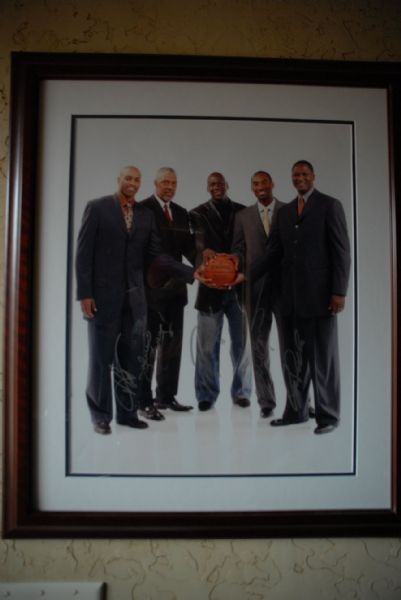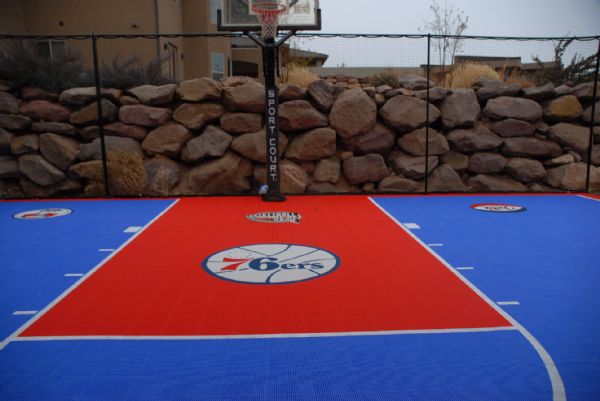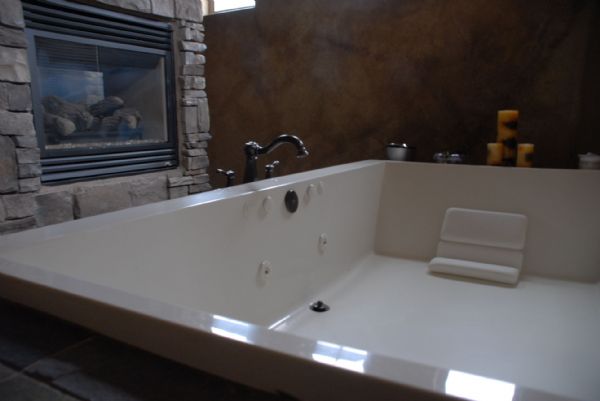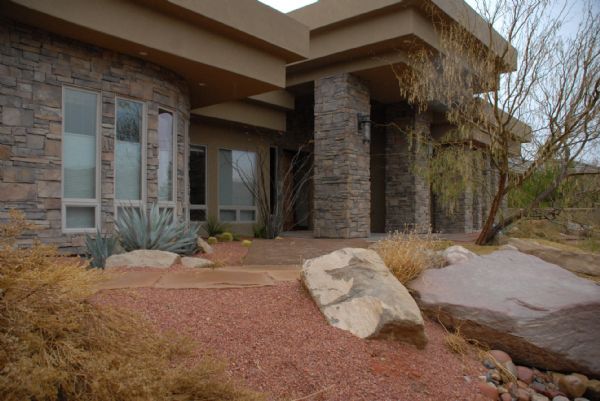This is an archived article that was published on sltrib.com in 2010, and information in the article may be outdated. It is provided only for personal research purposes and may not be reprinted.
St. George » The neighbors weren't about to complain about a little outdoor basketball one-on-one with the kids.
Seriously, if you lived next to a Basketball Hall of Famer, you, too, might press up against the kitchen window for a view of a jump hook or slam dunk. Angie Adams tried not to do that during the three years that Julius "Dr. J" Erving lived here in the Stone Cliff gated community, and she sometimes had to admonish her kids to stop gawking.
"I'd have to say, 'Kids! Get away from the window!' " she recalled.
Now the former Philadelphia 76ers superstar has moved on, but the outdoor rubberized court, complete with his old team's logo and all-American colors, is available for a price. The five-bedroom, 6,572-square-foot home attached to the court is listed at $2.25 million -- down a quarter-million from when Dr. J decided to sell last year.
It's a two-level flat-top stone and stucco home with a front door you could drive a Smart Car through. Four of the bedrooms have their own bathrooms, and the bath in the master suite is the size of a row boat. The builder contacted someone who works with NFL teams to find such a big and tall tub, said Cindy Campbell, the broker who found the home for Erving and now is marketing it for him.
Campbell is no basketball aficionado, and so when Erving called her office in 2004 and asked if she could show him around, his name didn't ring a bell. He was calling from Las Vegas, so she told him she would see him in a couple of hours.
No, he told her. Could she pick him up at the airport? His group was coming in by private plane.
"Sure!" she recalled saying, eyes widening. And Erving only solidified her suspicion of deep pockets when, over lunch at the Painted Pony, he asked about philanthropic opportunities in the community. Friends of hers kept walking past the table and saying hi, but she thought nothing of it. She still didn't know Erving's story until the next day at a board meeting with her colleagues.
"They asked me, 'How do you know Dr. J?' " she said. "I said, 'He's a doctor, too?' "
He came for the sun and the golfing, like many St. George transplants, Campbell said. He also desired a smallish town where he felt comfortable raising children. They searched for about a year and a half before landing on the hillside home at Stone Cliff, on the city's southeast side. Its stone-tiled balcony -- an outdoor living room, really -- overlooks the Virgin River Valley and the black and red mesas to the northwest.
From there she got to know the NBA champion, his wife, Dorys, their two school-age boys and young daughter. The family is friendly and generous, she said, and Dr. J extends his hand and says his name -- Julius -- to everyone he meets, whether they're star-struck or not. She remembered a conversation about brash young NBA stars in which Erving told her that in the old days players respected the game and earned their pay before demanding huge contracts.
"He's a real gentleman," she said
That word comes up all over town among people who met Erving when Utah was his primary residence. Mayor Daniel McArthur met Erving at some community events and recalled how warm and genuine he seemed. Erving flipped the switch on Main Street's Christmas lights one year, he recalled. But even when not involved in public events, Erving was hard to miss if for no other reason than he is 6-foot-7 and black.
"We don't have many people of color in our community," McArthur said, "so people noticed him but some didn't know much about him other than that he was tall, he had a great voice and he was friendly to everyone.
"We wish he would've stayed."
The mayor wishes, also, that he'd thought to get a signed basketball when he gave Erving the key to the city.
Erving has many business interests, and he left partly for one of them, Campbell said. The family relocated to the Atlanta area, where he bought a golf course. Erving also has a grown son who runs a business in Atlanta.
Most of the family's belongings left with them, but there remain vestiges of the superstar while Campbell is showing the home. His weight bench and inclined treadmill are on the balcony. A signed photo is in his office showing him with some of his successors in the game's spotlight: Michael Jordan, Kobe Bryant, Vince Carter. Also in the office, half-obscured by a shelf near the ceiling, is a two-foot bronze trophy honoring him for helping introduce the NBA to Dallas when the Sixers played the Mavericks on Sept. 26, 1980, in that team's first season. The bookshelf in one room still contains dozens of titles, including "The Legend of Bagger Vance," "Where the Sidewalk Ends," "Wooden on Leadership," two Harry Potter tomes, the Holy Bible and "Shakedown: Exposing the Real Jesse Jackson."
And then there's the red, white and blue basketball court. If the home's eventual buyers aren't Sixers fans, perhaps they'll be nostalgic for Utah's American Basketball Association era, when the Stars battled Erving's early career teams, the Virginia Squires and the New York Nets. Those logos also are on the court -- just not front and center in the key, where the 76ers trademark dominates.
Adams, the Stone Cliff neighbor, thinks it's still possible the Ervings could return. When last she spoke to Dr. J, sometime last year, he told her if the home doesn't sell, then the family might just move back someday.
If not, at least her family has one souvenir from their famous former neighbor. Adams said she was always careful to give Erving space, and frequently rejected pleas from friends who wanted to meet him or have him do something for them. Some would leave things for him to sign, but she never took them to Erving.
Even her family never asked for his signature, she said. At that, her son Breitton furrowed his eyebrows at her.
"I went over to his house and got an autograph," he said in the universal tone used by kids having to explain the obvious to their parents.













